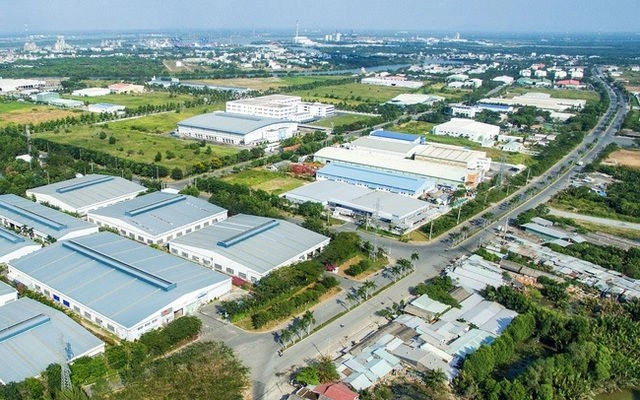Many big companies such as Samsung, Foxconn, and LG sequences "port money" in North Vietnam
- duyenthu.vietdata
- Apr 5, 2023
- 3 min read
The Northern key economic region has welcomed the wave of investment from global electronic businesses for a long time, these "queen bees" have led to the wave of relocation of supporting industries to Vietnam.
The Northern key economic region includes 7 provinces/cities: Hai Phong, Hanoi, Bac Ninh, Hai Duong, Hung Yen, Vinh Phuc, and Quang Ninh. The Northern key economic region currently has 86 established industrial parks with a total land area of nearly 26,600ha. Which, Bac Ninh and Hai Phong are the two provinces with the highest supply in the Northern market.
According to JLL data, the average occupancy rate in 2022 decreased slightly to 79.1% (-0.9 pts % n/n and -1.2 pts q/q) while the average land rental price is slower, reaching 111 USD/m2/remaining lease term (+0.9 % n/n and +0.9 % q/q).
Regarding the ready-built factory market, the total supply reached 2.2 million m2 of commercial space (+1.7 n/n) with an average rent of 4.84 USD/m2/month (+3% n/n) and + 1.5% q/q). Bac Ninh and Hai Phong still account for the largest proportion of the total supply in the north with projects from large investors.

Source: JLL

Source: JLL
The Northern key economic region has welcomed the wave of investment from global electronics enterprises for a long time such as Panasonic (1991), LG Display (1995), Canon (2001), Foxconn (2007), Samsung (2008), Fuji Xerox (2013) and more recently corporations such as Goertek and Jinko Solar. And these "queen bees" led to the wave of relocation of supporting industries to Vietnam.
According to Cushman & Wakefield, by 2022, the total number of suppliers of Vietnamese enterprises including tier 1 and tier 2 for Samsung is 250, of which tier 1 enterprises are 52. This is a large increase compared to that of tier 1 and tier 2 for Samsung. 4 enterprises were granted in 2014.
A recent report by ACB Securities Co., Ltd (ACBS) explained the reasons why "big men" chose the northern key economic region as their "base".
According to ACBS, in terms of location, the Northern key economic region is close to China - the world's largest production and consumption market, and close to South Korea and Japan - two of the largest investment countries in Vietnam. Vietnam, more than the southern key economic region.

In addition, the northern key economic region is located next to China's south including Shanghai, Hong Kong, Shenzhen, Fujian, and Guangdong, where the headquarters of manufacturing, biochemical, and commercial corporations are located. and tech giants account for more than 30% of China's GDP. In addition, the North is also closer to Taiwan, which contributes 63% of the world's semiconductor material supply and produces 73% of the world's semiconductor chips.
In terms of roads, the Northern Key Economic Zone is expected to have more expressways than the South. According to the plan by 2030, the North will have 14 highways with a total length of 2,300km. Currently, the North has 12 expressways with a total length of 896km, of which the Van Don - Mong Cai expressway (80km) connects with 3 border gates and 3 international airports.
Moreover, the North owns a road and rail connection directly to Shenzhen, which is known as the "silicon valley" of China. The total volume of goods transported by road in the North is twice as high as in the South. Meanwhile, the southern key economic region has a competitive advantage in sea transportation.
In addition to roads, the North also has the advantage of air. The Northern region has 7 airports: Noi Bai, Van Don, Cat Bi, Tho Xuan, Vinh, Dien Bien, and Dong Hoi. In, Noi Bai International Airport has a cargo terminal with a capacity of 403,000 tons of cargo/year with 66 airlines operating (compared to Singapore's Changi Airport, which has 99 airlines).
In 2021, the volume of goods transported through Noi Bai Airport will be 0.7 million tons, 3 times higher than the 0.2 million tons of Tan Son Nhat Airport. Due to product characteristics, corporations manufacturing technology products/equipment often choose to transport by land or air instead of by sea.
Another advantage in the northern key economic region is that the land clearance process is less difficult than in the south, as farmers are more cooperative and willing to become workers. Rice land in the North is also more concentrated while the South is scattered. The population density in the North is also higher.
In addition, the land rent in the North is also lower than in the South. By the end of 2022, the average rental price in the northern key economic region is 111 USD/m2/remaining lease term, in the south, it is 126 USD/m2/remaining lease term.
(Nhip song thi truong)



Comments